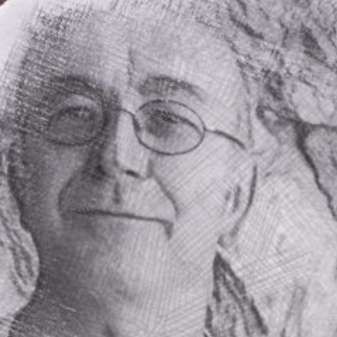I was surprised to discover, in Charlotte Gardner’s fine programme notes, that the 1911 piano original of Ravel’s Valses Nobles et Sentimentales met with audible scorn at its première – a backfiring “blind listening”. Perhaps Ravel’s exquisite 1912 orchestration accounts for this later version’s popular acclaim. Moods vary more that a set of eight waltzes might suggest, and the RSNO explored a full emotional palate in this Usher Hall performance.
Conducting without a baton but with his whole body, Yan Pascal Tortelier’s literally upbeat style encouraged a lively account, especially in the giddier moments of no. 7 (“Moins vif”), and the swagger of no. 1 (“Modéré – Très franc”). Equally, he brought out gossamer delicacy in no. 2 (“Assez lent – avec une expression intense”), which featured Katherine Bryan in a lovely modal flute solo. Tempo and dynamic level varied greatly within some individual movements and attention to expressive detail was impressive. Ravel is clearly dear to Tortelier’s heart and I was interested to read that he has orchestrated the Piano Trio of this most colourful of orchestrators.
The concert continuing with a double concerto and a concerto for orchestra, the choice of this opener fascinated me, and I wondered if the programmers shared my impression that every Ravel work resembles a concerto for orchestra. Brahms’ 1887 Concerto for Violin and Cello in A minor Op. 102 was a partially successful attempt at reconciliation with his estranged friend, the violinist Joseph Joachim. It features a variant of the previously used F-A-E motif, signifying the violinist’s personal motto, “Frei aber einsam” (“free but lonely”) – surely the most plangent existential price tag.
Tortelier was quoted in the programme as saying how much he looked forward to working again with violinist Nicola Benedetti, and the relationship between them and cello soloist Leonard Elschenbroich suggested a relaxed warmth. Sharing a music stand, the soloists also shared musical phrases. The most striking appears in the opening Allegro and journeys from the violin’s heights to the cello’s depths before returning – all within seconds. This touch alone, in Brahms’ last major orchestral work, surely sheds the conservative label. Like the Ravel, this work’s première incurred wrath, some of it very harsh. Listening to the central Andante, beautifully played here, I found it difficult to account for such negativity. At times Benedetti and Elschenbroich were simultaneously engaged in double-stopping, which created the magical illusion of a string quartet. One such moment, in the middle of this movement, really took me by surprise. Following a trill, the cello glides up to a pair of notes which, in combination those of the violin, creates the effect of swerving off the expected harmonic path. Order is soon restored by a heartily romantic theme, followed by some incredibly delicate writing for the soloists, played here with supreme tenderness. This performance prompted an extremely warm audience response. I had noted that Benedetti, when not playing, seemed to thrill to orchestral passages, suggesting a holistic affection for the work which would surely have touched Brahms.
The programme’s finale was simply electrifying – Lutosławski’s 1954 Concerto for Orchestra. Commissioned by the Warsaw Philharmonic Orchestra, this three-movement work, which took four years to complete, is fuelled by energising contrapuntal treatment of already energetic folk tunes. The opening Intrada, played here with infectious vitality, is a fine example. The scurrying theme sounded all the more determined to keep moving for the timpani’s attempt to pin it down with belligerently repeated notes. The same tension-inducing feature closes the movement, but now in the clear, thin air of the celeste’s range. The RSNO’s opening of the central movement (“Capriccio notturno e Arioso”) proved that volume is not a prerequisite for energy and excitement. And thanks to that, the later power of the fanfaring trumpets, topped by guest principal Huw Morgan, sounded all the greater. Pressing pizzicato strings lent a quiet charge to the movement’s close.
Pacing of the Passacaglia’s gathering urgency was excellent. By this point in the piece we had enjoyed many fine solo and section moments; every conceivable technique and articulation; every instrumental colour and combination. The closing Chorale, Lutosławski’s own theme, ushered in two striking moments for truly outstanding, nine-strong RSNO brass. The first featured dizzying bell notes; the second was their statement, in tandem with the five-strong horn section, of the chorale theme, for which all stood. Was I the only one who felt the urge to cheer at this moment?
The orchestra’s unbelievable energy was matched by Tortelier, who left the podium by means of gravity-defying jumps more than any conductor I can recall. The somewhat overlooked centenary composer of this work would surely have been delighted with this performance. If every workplace could undergo a similar team-building exercise, the world would be a happier place.


